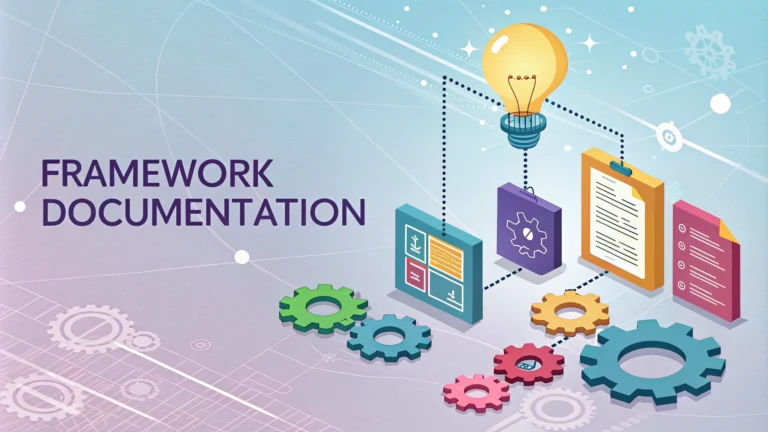A penetration testing framework provides security professionals with organized methodologies and tools to conduct systematic security assessments.
Common frameworks like OWASP, PTES, and NIST offer standardized approaches to identify and exploit vulnerabilities in systems and applications.
Popular Penetration Testing Frameworks
- OWASP Testing Guide
- Focus: Web application security
- Website: OWASP Testing Guide
- Best for: Web developers and security testers
- PTES (Penetration Testing Execution Standard)
- Focus: End-to-end testing methodology
- Website: PTES Standard
- Best for: Professional pentesters
- NIST SP 800-115
- Focus: Technical security testing guidelines
- Website: NIST Guidelines
- Best for: Government and regulatory compliance
Framework Selection Tips
- Match the framework to your testing objectives and scope
- Consider regulatory requirements specific to your industry
- Evaluate team expertise and available resources
- Check framework documentation and community support
Framework Implementation Steps
- Planning
- Define scope and objectives
- Obtain necessary permissions
- Prepare testing environment
- Reconnaissance
- Gather target information
- Map network infrastructure
- Identify potential entry points
- Testing
- Execute security tests
- Document findings
- Maintain test evidence
- Reporting
- Analyze results
- Prioritize vulnerabilities
- Provide remediation recommendations
Common Tools by Framework
| Framework | Recommended Tools |
|---|---|
| OWASP | Burp Suite, OWASP ZAP, SQLmap |
| PTES | Metasploit, Nmap, Wireshark |
| NIST | Nessus, OpenVAS, Nexpose |
Best Practices
- Document every step of the testing process
- Maintain clear communication with stakeholders
- Follow ethical guidelines and legal requirements
- Regularly update tools and methodologies
- Practice safe handling of sensitive data
For additional guidance, consult the official documentation of each framework or join their respective community forums.
Questions about framework implementation can be directed to the OWASP Foundation (Contact OWASP) or professional penetration testing communities.
Framework Integration Challenges
- Framework overlap and compatibility issues
- Resource and time constraints
- Team skill gaps
- Complex regulatory requirements
Risk Management Considerations
Risk Assessment
- Asset classification and valuation
- Threat modeling
- Impact analysis
- Mitigation strategy development
Compliance Requirements
- Industry-specific regulations
- Data protection standards
- International compliance frameworks
Framework Maintenance
- Regular methodology updates
- Tool calibration and upgrades
- Team training and certification
- Documentation revision
Conclusion
Successful implementation of penetration testing frameworks requires careful planning, appropriate tool selection, and ongoing maintenance. Organizations must balance security objectives with available resources while ensuring compliance with relevant standards and regulations.
Regular framework evaluation and updates, combined with proper documentation and team training, help maintain testing effectiveness and adapt to evolving security threats.
Key takeaways:
- Choose frameworks based on specific organizational needs
- Maintain consistent documentation and reporting
- Invest in team training and tool updates
- Follow industry best practices and compliance requirements
FAQs
- What is framework documentation in penetration testing?
A systematic approach to documenting the methodology, tools, findings, and procedures used during security assessments to ensure consistency and repeatability of testing processes. - What are the essential components of penetration testing documentation?
Scope definition, methodology description, vulnerability findings, risk ratings, technical details, remediation recommendations, and executive summary. - Why is the MITRE ATT&CK framework important in pentest documentation?
It provides a standardized taxonomy for documenting adversary tactics, techniques, and procedures (TTPs), enabling better threat classification and mitigation strategies. - How should sensitive information be handled in pentest documentation?
Using encryption, access controls, data classification labels, and following data protection regulations while ensuring only authorized personnel can access the documentation. - What reporting templates are commonly used in penetration testing?
OWASP Testing Guide template, NIST SP 800-115 format, PCI DSS reporting template, and custom organizational templates aligned with industry standards. - How should vulnerabilities be prioritized in framework documentation?
Using standardized scoring systems like CVSS (Common Vulnerability Scoring System), considering business impact, exploitation difficulty, and remediation complexity. - What tools are recommended for managing pentest documentation?
Specialized tools like PlexTrac, Dradis Framework, Faraday, and DefectDojo for collaborative documentation, tracking, and reporting. - How long should penetration testing documentation be retained?
Documentation should be retained according to regulatory requirements, typically 1-3 years, while ensuring secure storage and proper disposal after retention period. - What evidence should be included in framework documentation?
Screenshots, network captures, log files, exploit code (sanitized), system configurations, and reproducible test cases that validate findings. - How should remediation verification be documented?
Including detailed retest procedures, validation methods, before-and-after evidence, and confirmation of successful vulnerability remediation.







